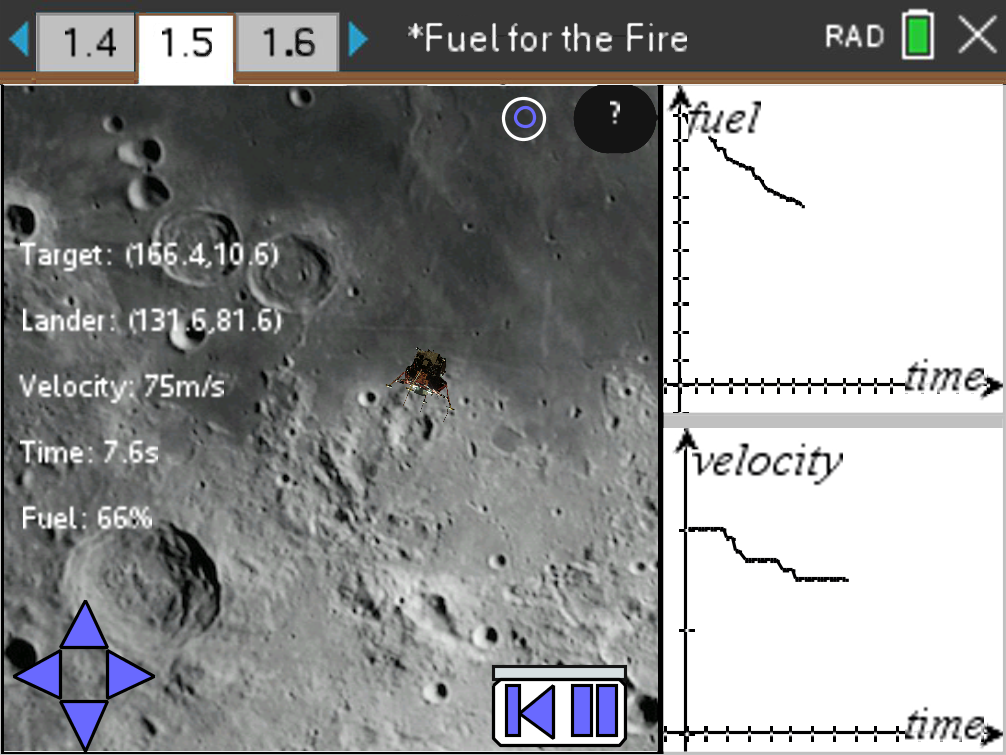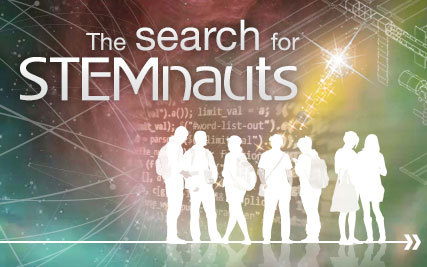Mission Celebration: Use Math to Mark the 50th Anniversary of the Apollo 11 Moon Landing
As we celebrate the 50th anniversary of Neil Armstrong and Buzz Aldrin taking human's first steps on the moon, we want to help you honor this historic mission with your students. There’s no need to leave planet Earth to enjoy the anniversary. Grab your calculators, and let’s take a look at some out-of-this-world activities to help students mark this milestone on the moon using math. Boom!
On July 20, 1969, Neil Armstrong and Buzz Aldrin were on approach to Tranquility Base when Armstrong realized they were flying into a field of car-sized boulders. Armstrong calmly guided the Eagle landing module to a safe area, beyond the boulder field, with less than 30 seconds of fuel left in the tank. This was an incredible feat of skill and bravery.
In a joint mission from NASA and Texas Instruments (TI), called "Mission ImaginaTIon," we’ve created a series of activities that help students explore Apollo 11’s harrowing story, among others, using their TI-NspireTM CX graphing calculators.

In the first activity, Fuel for the Fire, students connect math and science, build reasoning and problem-solving skills, and investigate design processes as they are put in the role of propulsion engineers. Their mission: Design and fuel rocket boosters like the Space Launch System (SLS) Core Stage. This lesson is sure to ignite students’ interest in space-age careers while tackling topics like constant rates of change and linear functions. Fuel for the Fire also includes a game that challenges students to land a spacecraft on the moon.

Another one of my favorite space-themed activities is The Search for STEMnauts. These activities challenge students to unravel brainteasers using coding and STEM principles that make space exploration possible. The challenges are organized in six categories, each containing questions and riddles of varying complexity, with points awarded based on the degree of difficulty. From cracking a code using TI’s basic programming language to calculating the travel time between Earth and Mars, students will put their STEM skills to the test. Start the countdown by requesting the teacher and student documents, then lift off on a journey into learning.
About the author: Curtis Brown has a bachelor’s degree in laser optical engineering and worked as an AP® Statistics and algebra II teacher for seven years before becoming a math specialist for Texas Instruments (TI). Since starting at TI in 2015, he has led many content development projects, including several of the STEM Behind series. Not a computer programmer by training, he has found a love for coding in TI-Basic, particularly for the purpose of teaching mathematics.
Tagcloud
Archive
- 2025
- 2024
-
2023
- January (3)
- February (3)
- March (5)
- April (3)
- May (3)
- June (3)
- July (2)
-
August (6)
- 5 Ways to Spruce Up Your Classroom for Back to School
- Day of the Dog: Which Dog Is Roundest?
- Women Who Code: A TI Intern’s Fascinating STEM Journey
- 6 Sensational TI Resources to Jump-Start Your School Year
- 3 Back-to-School Math Activities to Reenergize Your Students
- A New School Year — A New You(Tube)!
- September (2)
- October (3)
- November (1)
- 2022
-
2021
- January (2)
- February (3)
- March (5)
-
April (7)
- Top Tips for Tackling the SAT® with the TI-84 Plus CE
- Monday Night Calculus With Steve Kokoska and Tom Dick
- Which TI Calculator for the SAT® and Why?
- Top Tips From a Math Teacher for Taking the Online AP® Exam
- Celebrate National Robotics Week With Supervised Teardowns
- How To Use the TI-84 Plus Family of Graphing Calculators To Succeed on the ACT®
- AP® Statistics: 6 Math Functions You Must Know for the TI-84 Plus
- May (1)
- June (3)
- July (2)
- August (5)
- September (2)
-
October (4)
- Transformation Graphing — the Families of Functions Modular Video Series to the Rescue!
- Top 3 Halloween-Themed Classroom Activities
- In Honor of National Chemistry Week, 5 “Organic” Ways to Incorporate TI Technology Into Chemistry Class
- 5 Spook-tacular Ways to Bring the Halloween “Spirits” Into Your Classroom
- November (4)
- December (1)
-
2020
- January (2)
- February (1)
- March (3)
- April (1)
- May (2)
- July (1)
- August (2)
- September (3)
-
October (7)
- Tips for Teachers in the time of COVID-19
- Top 10 Features of TI-84 Plus for Taking the ACT®
- TI Codes Contest Winners Revealed
- Best of Chemistry Activities for the Fall Semester
- Best of Biology Activities for the Fall Semester
- Best of Physics Activities for the Fall Semester
- Best of Middle Grades Science Activities
- November (1)
- December (2)
- 2019
-
2018
- January (1)
- February (5)
- March (4)
- April (5)
- May (4)
- June (4)
- July (4)
- August (4)
- September (5)
-
October (9)
- Art in Chemistry
- Which Texas Instruments (TI) Calculator for the ACT® and Why?
- Meet TI Teacher of the Month: Jessica Kohout
- Innovation in Biology
- Learning With Your Students
- A first-of-its-kind STEM strategy charts path to help educators
- #NCTMregionals Hartford 2018 Recap
- The Math Behind “Going Viral”
- Real-World Applications of Chemistry
-
November (8)
- Testing Tips: Using Calculators on Class Assessments
- Girls in STEM: A Personal Perspective
- 5 Teachers You Should Be Following on Instagram Right Now
- Meet TI Teacher of the Month: Katie England
- End-of-Marking Period Feedback Is a Two-Way Street
- #NCTMregionals Kansas City 2018 Recap
- Slope: It Shouldn’t Just Be a Formula
- Hit a high note exploring the math behind music
- December (5)
- 2017
- 2016
- 2015
